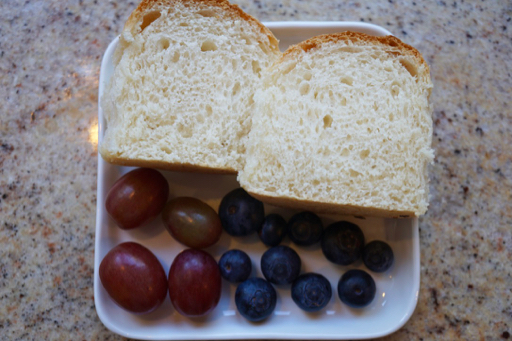Being somewhat of a "gadget" lover, the YouTube discussion convinced me I had to try this and I ordered one. After its arrival, it sat for some time but finally we had a chance to use it. We were not sure how "smoke-less" this was so we tried it on the stove under the exhaust fan. I followed the instructions. First, I filled the moat to 80% with water and preheated it for 5 minutes on high flame and then turned the flame down to medium. I brushed the grill surface with olive oil and started cooking.
The picture below shows the end products. We grilled filet mignon, shiitake mushrooms, onions, small red potatoes and zucchini. (My wife added a pat of butter to the onion and zucchini when I wasn't looking). Since the meat was filet mignon and very tender I didn't want to overcook it so I did not leave it on the grill for long as a result, there were no char marks.
The meat was one medium sized filet mignon cut into 1/4 inch slices and seasoned with salt and pepper. I put a bit of olive oil on the gill sides of the Shiitake mushrooms and seasoned with salt. I sliced the the onion, and zucchini into1/8 inch thick pieces. I secured the sections of the onions with toothpicks and coated the vegetables with olive oil and seasoned with salt and pepper.
I first microwaved the small red potatoes in a silicon container until they were cooked then I cut them in half and seasoned them with salt and pepper.
I started cooking with the vegetables since I figured they would take much longer than the meat to cook. At medium flame, char marks did not develop so I cranked up the heat to high flame and finally the food started cooking with char marks but still there was no discernible smoke .
The picture below shows the nice crust that started forming on the potatoes and onions. When the veggies were cooked I added the meat. The meat took only few a minutes to cook to medium rare but with this short cooking no char developed. The juices from the meat added to the flavor of the veggies.
Certainly this is a good way to grill without decernable smoke. It is possible to use this grill on the table with a portable gas burner but we are not sure if the heat would be high enough. Besides, we just got rid of our aged portable cassette because we were worried about how safe it was given how ancient it was.
The food tasted really good. Although we did not use any sauce, there was enough seasonings on the food. Both the veggies and meat were perfectly cooked. Washing the grill afterward was not too difficult but we have to make sure it is totally dry before using it again.






















































